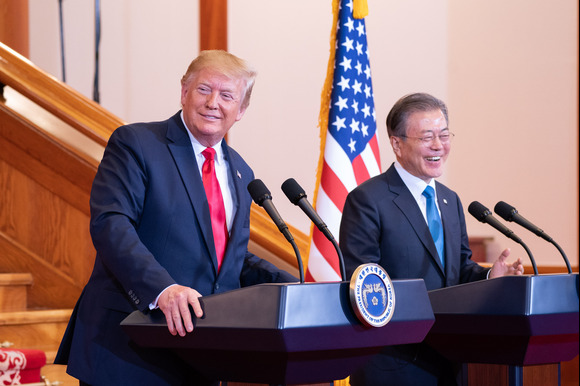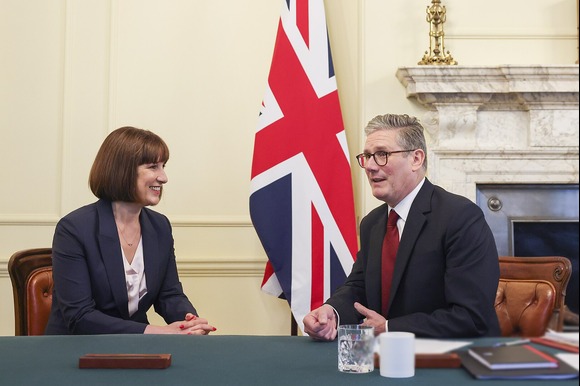
Wikipedia
The G7 summit held in Kananaskis, Alberta, under the leadership of Canadian Prime Minister Mark Carney, was meant to be a showcase of thoughtful diplomacy and progressive policy agendas. But the meticulously laid plans of the first-time host were quickly upended by two major disruptions: the escalating war between Israel and Iran and the sudden, early departure of US President Donald Trump.
Despite the unexpected turns, Carney remained optimistic, declaring on Tuesday that the gathering “can begin a new era of co-operation that promotes long-term resilience over short-term efficiency.”
Here are five key takeaways from a summit marked by high tensions and rapid developments.
Trump’s Sudden Exit Reshapes the Summit
The G7, comprising Italy, the United States, France, Germany, the United Kingdom, Canada, and Japan, found itself short one leader on Tuesday after President Trump abruptly left the summit to return to Washington, D.C., citing the deteriorating situation in the Middle East as the reason.
Summit participants attempted to put a positive spin on Trump’s departure. Prime Minister Carney said he fully understood the president’s decision, while French President Emmanuel Macron called a reporter’s suggestion that the group was now a “G6” rather than G7 “disrespectful.”
The White House emphasized that Trump had a “great day” in Alberta and had accomplished much before leaving. US Treasury Secretary Scott Bessent remained behind to represent American interests for the remainder of the summit.
Trump’s early exit did not necessarily disrupt proceedings, according to Denisse Rudich, director of the G7 Research Group in London. She observed that Trump’s presence had created a sense of tension among the leaders, with smiles that seemed forced. The following day, she noted, the atmosphere felt significantly more relaxed and authentic.
Nevertheless, Trump’s departure meant he missed crucial bilateral meetings with Ukrainian President Volodymyr Zelensky, Australian Prime Minister Anthony Albanese, and Mexican President Claudia Sheinbaum—though the White House later confirmed a phone conversation with Sheinbaum had taken place.
Israel-Iran War Overshadows Planned Agenda
As the summit progressed, global focus shifted from the Canadian Rockies to the rapidly escalating conflict in the Middle East. The war between Israel and Iran loomed large over the summit’s discussions, significantly sidelining the originally planned agenda.
G7 leaders worked behind closed doors to find a unified response to the unfolding crisis. Eventually, all seven nations, including the US, issued a joint communique calling for “de-escalation of hostilities in the Middle East, including a ceasefire in Gaza.” Notably, however, the statement stopped short of calling for a ceasefire between Israel and Iran directly.
Tensions also surfaced between leaders, with Trump accusing Macron of “publicity seeking” after the French president suggested the US was actively working toward a ceasefire. Macron responded pointedly, saying, “I am not responsible for the changes of mind of the US administration.”
Despite these verbal jabs, the communique represented a rare moment of consensus, underlining a collective desire to contain the regional conflict.
Ukraine, India, and Diplomatic Maneuvering
On the issue of Ukraine, President Zelensky did secure new aid from Canada, but the summit ended without a strong joint statement of support—reportedly due to US objections. Canadian officials had initially drafted a more forceful declaration, but it was eventually dropped.
Carney denied any lack of unity on Ukraine, instead pointing to the chairman’s summary statement. That document reaffirmed support for “President Trump’s efforts to achieve a just and lasting peace in Ukraine” and urged Russia to agree to a ceasefire. It also committed the G7 to explore all options to pressure Moscow, including financial sanctions—an area where Trump has been notably reluctant.
Another delicate issue was the attendance of Indian Prime Minister Narendra Modi, which sparked controversy within Canada’s Sikh community. The tension stems from Ottawa’s accusation that Indian government agents were involved in the assassination of a Sikh separatist leader on Canadian soil last year.
Still, Carney’s office said diplomatic ties were being repaired, with both countries agreeing to restore some embassy functions. A readout of the Carney-Modi meeting stated that the two leaders discussed “transnational crime and repression, security, and the rules-based order.”
Despite these diplomatic challenges, Carney was able to maintain focus on several priority issues. Joint declarations emerged on topics including artificial intelligence and quantum computing, critical minerals, migrant smuggling, and international cooperation on wildfires—deliberately framed without directly invoking climate change.
Denisse Rudich praised Carney’s style, noting that his “concise, detailed, action-oriented” approach reflected his background as a central banker. She said the summit’s outcomes displayed a welcome emphasis on deliverables rather than rhetoric.
Carney’s Trade Ambitions
A highlight of the summit was a one-on-one meeting between Carney and President Trump. Canada and the US are in the midst of trying to resolve a brewing tariff war, with negotiations for a broader trade and security deal launched just last month.
Trump acknowledged differences in their approach, describing himself as a “tariff person” and Carney as someone with a “more complex idea.” Nonetheless, both sides indicated optimism, with Carney’s office confirming the leaders had agreed to pursue a deal within 30 days.
Carney emphasized that any deal would be made “in the best interests of certainly Canada and aligned with US interests.”
In addition to the US, Carney used the summit to promote Canada’s trade agenda to multiple other leaders. European officials said they were nearing an agreement on defence procurement with Canada—part of Carney’s broader goal to reduce his country’s heavy reliance on American suppliers and to diversify its trade relationships.
Carney has stated he wants to make Canada’s economy the strongest in the G7. This summit marked a first major effort toward that ambitious goal.
Trump’s Trade Push
For his part, Trump came to the G7 with a singular focus: trade deals. Though he did not finalize a new agreement with Canada, he and UK Prime Minister Sir Keir Starmer publicly celebrated the implementation of parts of a previously agreed tariff accord.
Trump also met with Japanese Prime Minister Shigeru Ishiba to discuss trade, but the two leaders failed to bridge the remaining gaps. “We’ve been exploring the possibility of a deal down to the wire, but there are still points where our views remain divided,” Ishiba told reporters.
Trump is under pressure to deliver results. He has promised multiple trade deals by July 9, the expiration date of a 90-day freeze on his controversial “Liberation Day” tariffs.
European Commission President Ursula von der Leyen described ongoing talks with the US as “complex” but said progress was being made, with hopes of reaching a deal by the self-imposed deadline.
A Summit of Unpredictability and Resolve
What began as a tightly choreographed summit for a new Canadian prime minister became a high-stakes diplomatic balancing act, with shifting global events testing the agility and resolve of world leaders.
Despite the drama, Carney appears to have navigated the storm with a steady hand, advancing key parts of his domestic and international agenda while weathering the unpredictability of his American counterpart.
Whether the agreements and diplomatic openings from this G7 summit will bear lasting fruit remains to be seen. But in Kananaskis, the groundwork was laid for a new chapter in global cooperation—even in the shadow of crisis.




